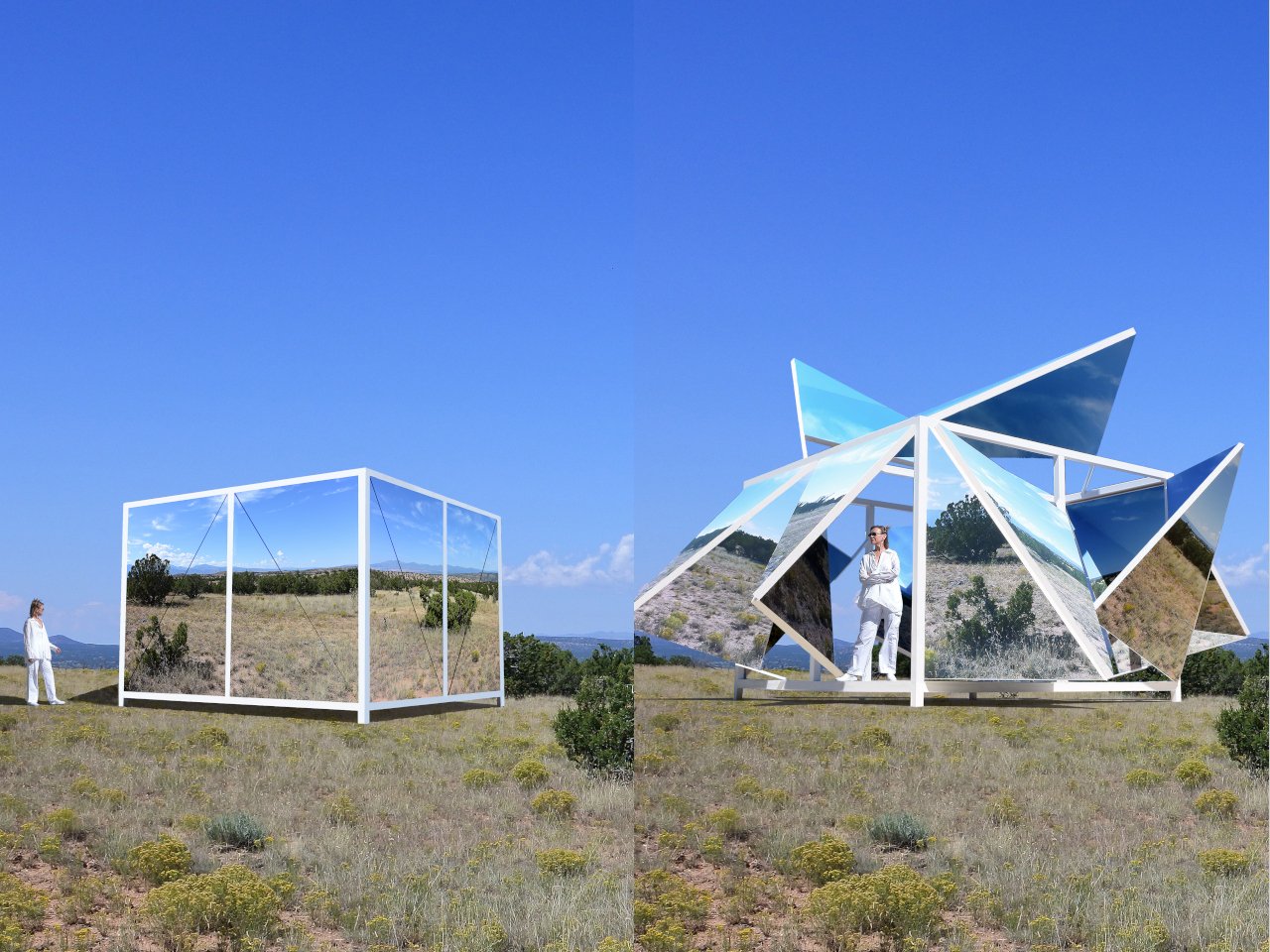Architecture usually frames the landscape around it, but what if it could actually become part of that landscape while letting you reshape both the space and your perspective? Michael Jantzen’s Folding Landscape Pavilion concept explores exactly this idea, creating an interactive structure that blurs the line between building, artwork, and the natural world.
The pavilion starts with a deceptively simple steel frame that holds ten photo-laminated panels, each one hinged and divided diagonally so they can fold and pivot in multiple directions. But here’s where it gets interesting: those panels aren’t just decorative surfaces. They’re high-resolution photographs taken from a single spot in the New Mexico landscape, capturing every possible view, including straight up at the sky and straight down at the ground.
Designer: Michael Jantzen
The floor itself is laminated with a photo of the exact ground where the pavilion sits. When everything is folded flat, the structure essentially disappears into its surroundings, creating perfect visual continuity between the photographed landscape and the real thing. It’s like architectural camouflage that actually works.
What makes this concept genuinely exciting is how visitors can physically interact with it. Each panel can be folded out from the frame and then manipulated along its diagonal hinge, creating an almost infinite number of spatial configurations. One moment you’re inside a minimalist cube, the next you’re surrounded by a dynamic sculpture that looks like it’s exploding outward into the landscape.
The real magic happens in the contrast between what’s frozen and what’s alive. Unlike mirrored pavilions that reflect whatever’s happening right now, these photo panels capture a specific moment in time. As seasons change, weather shifts, and light moves across the sky, the difference between the static images and the living landscape becomes more pronounced and poetic.
Jantzen designed the pavilion to be illuminated at night, which adds another layer of contrast between the photographed world and reality. The structure transforms from a landscape camouflage device during the day into a glowing beacon of captured memories after dark.
The Folding Landscape Pavilion represents something deeper than just clever engineering or pretty pictures. It’s a meditation on time, memory, and how we experience place. The concept invites you to question where the landscape ends and the building begins, while encouraging a more thoughtful relationship with the environment around you.
This kind of interactive, conceptual architecture proves that the most compelling designs often ask questions rather than just provide answers. Jantzen has created something that’s part shelter, part sculpture, and part philosophical prompt about how we see and remember the world around us.
The post Folding Landscape Pavilion Turns Architecture Into a Living Lens first appeared on Yanko Design.

